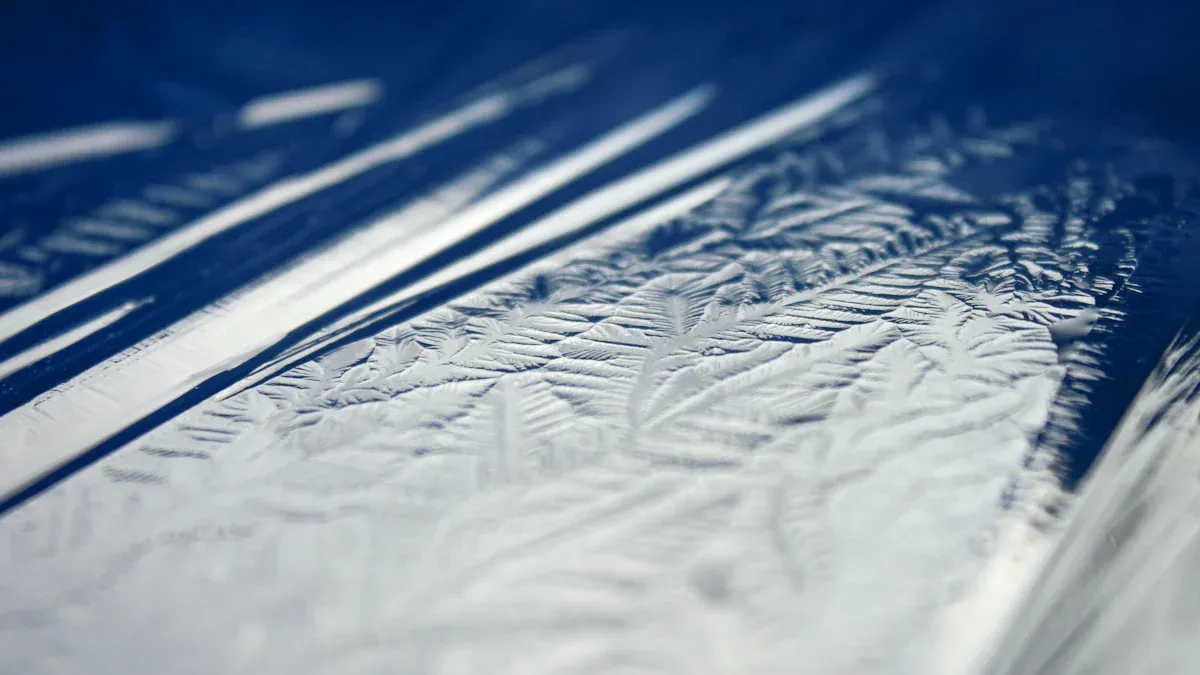
Silicon Carbide (SiC) Cantilever Paddle serves as a high-performance tool in industrial settings. It is designed to handle silicon wafers in extreme conditions. Silicon Carbide offers exceptional strength and resistance to heat and corrosion. The addition of an SiC coating enhances durability, making it ideal for high-temperature and corrosive environments.
Key Takeaways
- Silicon Carbide (SiC) Cantilever Paddles work well in very high heat. They can handle temperatures over 1,500°C. This makes them great for making semiconductors and solar panels.
- Silicon carbide is strong and resists rust. This means less fixing is needed and tools last longer. It also helps save money and improves work efficiency.
- SiC paddles are harder and carry heat better than quartz or alumina. This makes them more reliable and useful for tough industrial jobs.
Why Silicon Carbide is Used in Cantilever Paddles
Properties of Silicon Carbide
Silicon carbide is a compound known for its exceptional physical and chemical properties. It exhibits extreme hardness, ranking just below diamond on the Mohs scale. This makes it highly resistant to wear and mechanical stress. Its thermal conductivity is another standout feature, allowing it to transfer heat efficiently even in demanding environments. Additionally, silicon carbide resists chemical reactions, making it ideal for use in corrosive conditions.
The material also boasts a low thermal expansion coefficient. This property ensures dimensional stability when exposed to rapid temperature changes. Furthermore, silicon carbide is lightweight, which reduces the overall load on industrial equipment. These characteristics make it a preferred choice for manufacturing high-performance tools like the Silicon Carbide (SiC) Cantilever Paddle.
Benefits of Silicon Carbide in High-Temperature Applications
Silicon carbide performs exceptionally well in high-temperature environments. It can withstand temperatures exceeding 1,500°C without losing its structural integrity. This makes it suitable for processes that involve extreme heat, such as semiconductor manufacturing. Its ability to resist thermal shock ensures that it remains stable even during sudden temperature fluctuations.
In addition to thermal stability, silicon carbide enhances energy efficiency. Its high thermal conductivity allows for faster heat transfer, reducing energy consumption in industrial processes. The material’s resistance to oxidation further extends its lifespan in high-temperature settings. These benefits make the Silicon Carbide (SiC) Cantilever Paddle a reliable and efficient tool for industries requiring precision and durability.
Design and Functionality of Silicon Carbide (SiC) Cantilever Paddle

Structural Design of SiC Cantilever Paddles
The structural design of a Silicon Carbide (SiC) Cantilever Paddle prioritizes strength, precision, and durability. Engineers craft these paddles using high-purity silicon carbide to ensure optimal performance in extreme environments. The cantilever design allows the paddle to support silicon wafers securely while minimizing stress on the material.
The paddle’s lightweight structure reduces mechanical strain on industrial equipment. Its surface is often polished to a smooth finish, which prevents damage to delicate wafers during handling. The design also incorporates a high degree of dimensional accuracy. This ensures compatibility with automated systems used in semiconductor and photovoltaic industries.
How SiC Cantilever Paddles Operate in Industrial Processes
Silicon Carbide (SiC) Cantilever Paddles play a critical role in industrial processes. They transport silicon wafers through high-temperature furnaces and chemical processing chambers. The paddle’s thermal stability ensures it maintains its shape and functionality, even when exposed to rapid temperature changes.
During operation, the paddle holds the wafers in place, preventing movement or damage. Its resistance to chemical corrosion allows it to withstand harsh environments, such as those involving reactive gases or acids. This reliability ensures consistent performance, reducing downtime and improving overall efficiency.
The paddle’s ability to handle extreme conditions makes it indispensable in industries requiring precision and durability. Its design and functionality directly contribute to the success of processes like wafer fabrication and solar cell production.
Applications of Silicon Carbide (SiC) Cantilever Paddle

Use in Semiconductor Manufacturing
Silicon Carbide (SiC) Cantilever Paddles play a vital role in semiconductor manufacturing. These paddles transport silicon wafers through high-temperature furnaces during processes like oxidation, diffusion, and annealing. Their ability to withstand extreme heat ensures consistent performance, even in demanding conditions. The paddles’ chemical resistance protects them from reactive gases and corrosive chemicals used in wafer fabrication.
The precise design of these paddles minimizes the risk of wafer damage. Their smooth surfaces prevent scratches, ensuring the integrity of the wafers. This is critical in semiconductor production, where even minor defects can compromise the functionality of electronic devices. Additionally, the lightweight nature of silicon carbide reduces mechanical strain on automated systems, enhancing operational efficiency.
Role in Photovoltaic Industry
In the photovoltaic industry, Silicon Carbide (SiC) Cantilever Paddles support the production of solar cells. These paddles handle silicon wafers during high-temperature processes like doping and annealing. Their thermal stability ensures uniform heat distribution, which is essential for achieving high-quality solar cells.
The paddles’ resistance to oxidation and corrosion extends their lifespan, reducing the need for frequent replacements. This reliability lowers maintenance costs and improves overall productivity. Furthermore, their compatibility with automated systems streamlines the manufacturing process, enabling large-scale production of solar panels. By ensuring precision and durability, these paddles contribute to the efficiency of renewable energy technologies.
Advantages of Silicon Carbide (SiC) Cantilever Paddle
Durability and Resistance to Corrosion
Silicon carbide offers exceptional durability, making it ideal for industrial applications. The material resists wear and tear, even under continuous use in harsh environments. Its hardness prevents surface damage, ensuring a longer lifespan for the paddle. This durability reduces the need for frequent replacements, saving both time and costs.
The paddle also excels in resisting corrosion. It withstands exposure to reactive chemicals and gases without degrading. This property makes it suitable for processes involving acids or other corrosive substances. Industries benefit from this reliability, as it ensures consistent performance over time.
Tip: Choosing a durable and corrosion-resistant material like silicon carbide minimizes maintenance efforts and enhances operational efficiency.
Thermal Stability and Efficiency
Thermal stability is a key advantage of the Silicon Carbide (SiC) Cantilever Paddle. The material maintains its structural integrity at temperatures exceeding 1,500°C. This stability ensures reliable performance during high-temperature processes.
Silicon carbide also enhances energy efficiency. Its high thermal conductivity allows for rapid heat transfer, reducing energy consumption. This property improves the overall efficiency of industrial operations. Additionally, the paddle resists thermal shock, making it suitable for environments with sudden temperature changes.
Comparison with Other Materials
Compared to materials like quartz or alumina, silicon carbide stands out in several ways. It offers superior hardness, making it more resistant to mechanical stress. Its thermal conductivity is significantly higher, enabling faster heat transfer. Unlike quartz, silicon carbide resists chemical corrosion, making it more versatile.
| Material | Hardness | Thermal Conductivity | Corrosion Resistance |
|---|---|---|---|
| Silicon Carbide | High | High | Excellent |
| Quartz | Moderate | Low | Poor |
| Alumina | Moderate | Moderate | Moderate |
This comparison highlights why silicon carbide is the preferred choice for demanding applications. Its unique properties ensure better performance and longer service life.
Silicon Carbide (SiC) Cantilever Paddle plays a vital role in modern industrial processes. Its unique properties, such as durability, thermal stability, and corrosion resistance, make it indispensable in high-demand environments. By improving efficiency and ensuring reliable performance, this advanced tool supports industries in achieving precision and productivity.
FAQ
What makes silicon carbide better than quartz for cantilever paddles?
Silicon carbide offers superior hardness, thermal conductivity, and corrosion resistance compared to quartz. These properties make it more durable and efficient in high-temperature industrial applications.
How does a cantilever paddle improve wafer handling?
The cantilever paddle securely holds wafers during processing. Its smooth surface prevents scratches, while its thermal stability ensures consistent performance in high-temperature environments.
Can silicon carbide paddles be used in other industries?
Yes, silicon carbide paddles are versatile. They are used in semiconductor manufacturing, photovoltaic production, and other industries requiring precision tools for high-temperature and corrosive environments.
Note: Choosing the right material for industrial tools significantly impacts efficiency and durability. Silicon carbide stands out as a reliable option for demanding applications.


